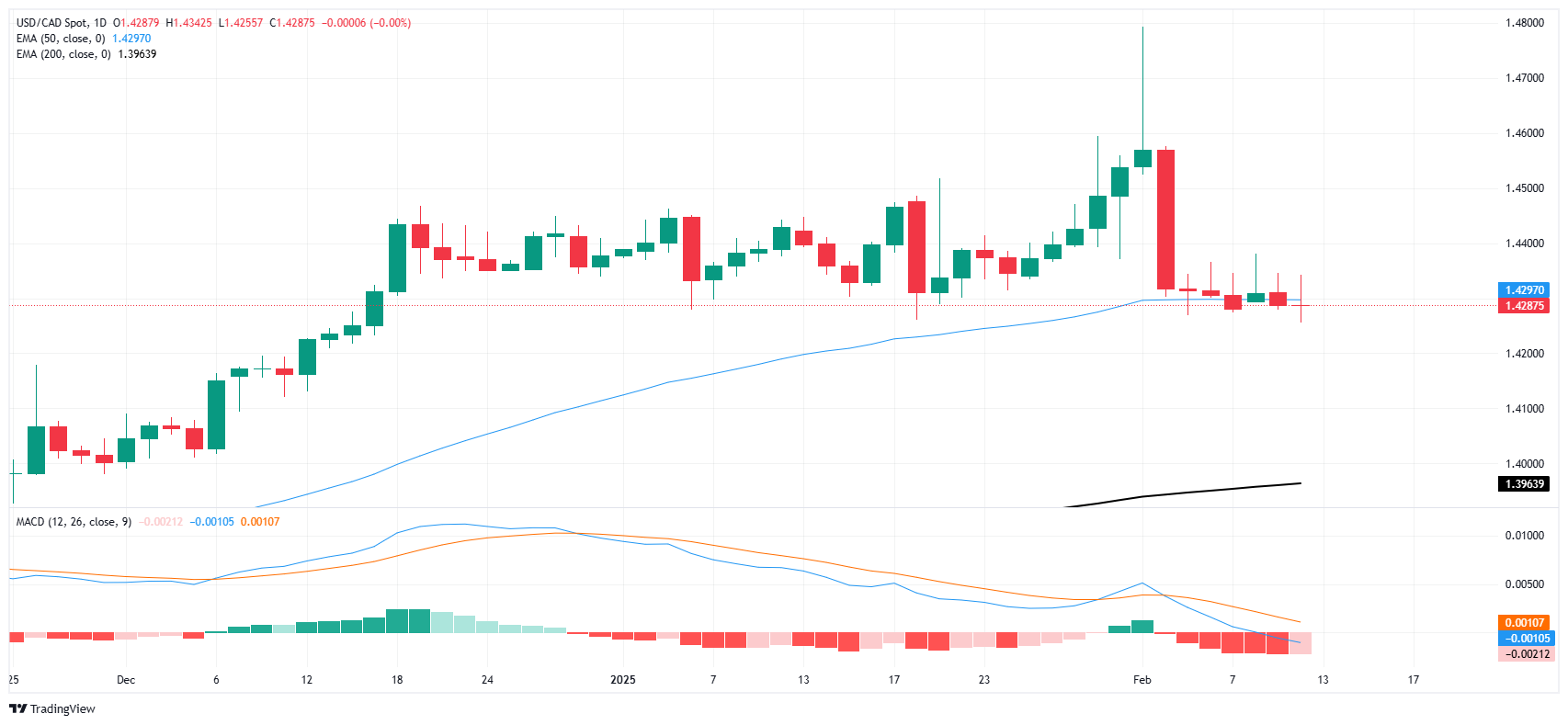Canadian Dollar recovery grinds away, Loonie finds fresh eight-week high
- The Canadian Dollar eked out a new eight-week peak on Wednesday.
- Economic data out of Canada remains thin, Greenback market flows dominate.
- Investors are recovering from a fresh spark in US inflation figures.
The Canadian Dollar (CAD) briefly tested a new eight-week peak on Wednesday, pushing USD/CAD to its lowest levels since mid-December. The Greenback is softening across the board as investor sentiment recovers from a fresh spike of US inflation, which has punished out bets of a Fed rate cut to December.
The Bank of Canada’s (BoC) latest Meeting Minutes showed the Canadian central bank remains leery of potential US tariffs, crimping the BoC’s ability to engage in policy adjustment and forcing Canadian policymakers to sit on the sidelines to see what happens. The BoC is bracing to see if possible tariffs from the US could spark a fresh round of inflation within the Canadian economy.
Daily digest market movers: Canadian Dollar finds limited room on the high side
- The Canadian Dollar tested briefly into a new eight-week peak before receding to familiar territory.
- The BoC’s latest Summary of Deliberations shows the BoC remains concerned about trade war fallout.
- US Consumer Price Index (CPI) inflation spiked in January, causing a ripple through global markets.
- Federal Reserve (Fed) Chair Jerome Powell continues to soothe markets, noting that US labor and Gross Domestic Product (GDP) growth remains firm.
- Despite a constant cycle of renewed tariff threats from US President Donald Trump, investors are banking on more concessions moving forward as the can gets kicked down the road by the Trump administration on its own tariff proposals.
Canadian Dollar price forecast
Despite some intraday jostling, the Canadian Dollar is broadly stuck in a familiar sideways grind. Price action continues to skid along the 50-day Exponential Moving Average (EMA) on the USD/CAD chart, waffling near 1.4300.
Despite the Loonie’s recent dip into a multi-decade low, the pair remains hobbled within a medium-term congestion channel. Bids have continued to grind sideways since December, albeit with some spikes in volatility as news headlines dominate the trading cycle.
USD/CAD daily chart
Canadian Dollar FAQs
The key factors driving the Canadian Dollar (CAD) are the level of interest rates set by the Bank of Canada (BoC), the price of Oil, Canada’s largest export, the health of its economy, inflation and the Trade Balance, which is the difference between the value of Canada’s exports versus its imports. Other factors include market sentiment – whether investors are taking on more risky assets (risk-on) or seeking safe-havens (risk-off) – with risk-on being CAD-positive. As its largest trading partner, the health of the US economy is also a key factor influencing the Canadian Dollar.
The Bank of Canada (BoC) has a significant influence on the Canadian Dollar by setting the level of interest rates that banks can lend to one another. This influences the level of interest rates for everyone. The main goal of the BoC is to maintain inflation at 1-3% by adjusting interest rates up or down. Relatively higher interest rates tend to be positive for the CAD. The Bank of Canada can also use quantitative easing and tightening to influence credit conditions, with the former CAD-negative and the latter CAD-positive.
The price of Oil is a key factor impacting the value of the Canadian Dollar. Petroleum is Canada’s biggest export, so Oil price tends to have an immediate impact on the CAD value. Generally, if Oil price rises CAD also goes up, as aggregate demand for the currency increases. The opposite is the case if the price of Oil falls. Higher Oil prices also tend to result in a greater likelihood of a positive Trade Balance, which is also supportive of the CAD.
While inflation had always traditionally been thought of as a negative factor for a currency since it lowers the value of money, the opposite has actually been the case in modern times with the relaxation of cross-border capital controls. Higher inflation tends to lead central banks to put up interest rates which attracts more capital inflows from global investors seeking a lucrative place to keep their money. This increases demand for the local currency, which in Canada’s case is the Canadian Dollar.
Macroeconomic data releases gauge the health of the economy and can have an impact on the Canadian Dollar. Indicators such as GDP, Manufacturing and Services PMIs, employment, and consumer sentiment surveys can all influence the direction of the CAD. A strong economy is good for the Canadian Dollar. Not only does it attract more foreign investment but it may encourage the Bank of Canada to put up interest rates, leading to a stronger currency. If economic data is weak, however, the CAD is likely to fall.
